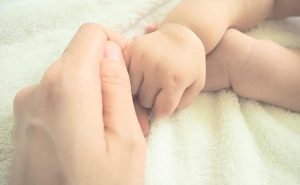Learn about the accuracy of prenatal screening tests like NIPT, the sensitivity, predictive values, and how results are interpreted for chromosomal abnormalities in unborn babies.
What is NIPT (Non-invasive Prenatal Testing)
NIPT (Non-invasive Prenatal Testing) is one of the prenatal screening tests. It is a test that measures fragments of fetal DNA contained in the blood of a pregnant woman to check if the baby has any chromosomal disorders. NIPT can detect chromosomal disorders such as trisomy 13, 18, and 21.
Some clinics also offer NIPT that can detect various other chromosomal abnormalities, but in many cases, babies with other chromosomal abnormalities will miscarry during early pregnancy.
The above three trisomies account for about 70% of fetal chromosomal disorders, so many clinics test for these three chromosomal abnormalities.
The Probability of Testing Positive in NIPT (Non-invasive Prenatal Testing)
According to the NIPT Consortium, 101,218 NIPT tests were conducted from 2013 to March 2021, with 1,825 cases testing positive. The probability of testing positive after NIPT is about 1.8%, meaning about 1 in 50 people received a diagnosis. 0.4% had an indeterminate result, and the remaining 97.8% tested negative.
The most common diagnosis among pregnant women who tested positive was trisomy 21 (Down syndrome) with 1,100 cases, followed by trisomy 18 with 559 cases.
Positive Predictive Value of NIPT (Non-invasive Prenatal Testing)
Of the 1,100 pregnant women who tested positive for trisomy 21, 955 underwent amniocentesis, a definitive test, and confirmed the diagnosis. In the remaining 26 cases, no abnormalities were found in the fetus, and it was judged as a false positive. In other words, the positive predictive value was 97.3%, and the false positive rate was 2.7%.
Trisomy Present Even with a Negative Result
Follow-up studies have been conducted on pregnant women who tested negative after NIPT (Non-invasive Prenatal Testing). In 72,525 tests conducted over six years, 58,893 cases were followed up to track the baby’s condition, including post-delivery progress. As a result, there were three false negatives each in trisomy 21 and 18.
Indicators Representing the Accuracy of NIPT (Non-invasive Prenatal Testing)
There are four indicators of test accuracy: sensitivity, specificity, predictive value, false positives, and false negatives. Understanding the meaning of each indicator will deepen your understanding of test accuracy.
Sensitivity
Sensitivity refers to the probability that a positive result will be obtained when the fetus actually has a chromosomal abnormality. Sensitivity varies depending on the type of chromosomal abnormality being tested. For example, for trisomy 21, sensitivity is about 99%. This means that if 100 pregnant women with a fetus that has trisomy 21 are tested, 99 will test positive.
Specificity
Specificity refers to the probability that a negative result will be obtained when the fetus does not have a chromosomal abnormality. Specificity for trisomy 21 is about 99%. This means that if 100 pregnant women without a fetus that has trisomy 21 are tested, 99 will test negative.
Predictive Value
Predictive value refers to the probability that a fetus actually has a chromosomal abnormality when a positive result is obtained. It is said that the predictive value is influenced by age. For example, the positive predictive value for trisomy 21 when tested in pregnant women aged 35 and over is about 95.9%.
In other words, even if the test result is positive, there is about a 4% chance that a baby without chromosomal abnormalities will be born.
False Positives and False Negatives
A false positive occurs when a positive result is obtained, but the baby is actually born without chromosomal abnormalities. A false negative occurs when a negative result is obtained, but the baby is born with chromosomal abnormalities.
Since NIPT (Non-invasive Prenatal Testing) is a screening test, it is common to perform further definitive tests such as amniocentesis or chorionic villus sampling when a positive result is obtained.
Does the Mother’s Age Affect the Accuracy of NIPT (Non-invasive Prenatal Testing)?
Although NIPT is a highly accurate screening test, the positive predictive value is affected by the age of the pregnant woman. The prevalence of fetal chromosomal disorders increases as the mother’s age increases. For trisomy 21, the prevalence is approximately 1 in 2,000 when the mother is 20 years old. However, when the mother is 40 years old, the prevalence increases to approximately 1 in 100.
Therefore, the positive predictive value of NIPT (Non-invasive Prenatal Testing) increases as the mother’s age increases.
How to Respond After NIPT (Non-invasive Prenatal Testing)

Test results are generally indicated as positive, negative, or requiring retesting. Here, we introduce how to respond to each result, so you can take action smoothly after testing.
If a Positive Diagnosis is Obtained
If a positive result is obtained, it indicates that there is a possibility of a chromosomal disorder in the fetus. Since NIPT (Non-invasive Prenatal Testing) is a screening test, a positive result does not 100% confirm the presence of chromosomal abnormalities. Also, the positive predictive value depends on the age of the pregnant woman and the type of chromosomal abnormality.
Therefore, if a positive result is obtained, it is common to undergo further definitive tests such as amniocentesis or chorionic villus sampling. Receiving a definitive diagnosis allows the pregnant woman to prepare mentally before delivery and set up a support system for child-rearing.
If a Negative Diagnosis is Obtained
If a negative result is obtained, it indicates that the likelihood of the fetus having a chromosomal disorder is low. Although this is not a definitive test, and false negatives occur very rarely, most cases where a negative result is obtained show no chromosomal abnormalities in the baby after birth.
Therefore, cases where further definitive testing is required after receiving a negative result from NIPT (Non-invasive Prenatal Testing) are rare. However, it is important to understand that there is a non-zero chance of the baby being born with chromosomal abnormalities after birth.
If Retesting is Required
Retesting indicates that the test could not provide an appropriate diagnosis of positive or negative. The reasons for retesting are mainly as follows:
・The amount of fetal DNA contained in the blood sample was insufficient
・Pregnant women could not be tested correctly due to the influence of the medicines they were taking
If DNA was insufficient, retesting may be possible after the pregnancy has progressed further.
What is a Definitive Test?
A definitive test is one that can alone confirm a diagnosis. In prenatal diagnosis, the two main definitive tests are chorionic villus sampling and amniocentesis. Here, we introduce the characteristics and contents of each definitive test for those considering definitive testing.
Chorionic Villus
Chorionic Villus is a method in which a needle is inserted into the pregnant woman’s abdomen to collect chorionic cells and check for changes in the shape and number of chromosomes. It can generally be performed between 11 and 14 weeks of pregnancy.
Since the needle is inserted into the pregnant woman’s abdomen, there are risks of water breaking, bleeding, intrauterine infection, premature birth, and maternal injury due to the puncture. Additionally, about 1 in 100 women may experience miscarriage or fetal death, so it is important to consult with your doctor before testing.
Even if the baby’s chromosomes are normal, about 1% of pregnant women have a condition called placental mosaicism, in which chromosomal abnormalities are present only in the placenta. In this case, even if the test result is positive, the baby born is likely to be free of chromosomal disorders.
Amniocentesis
Amniocentesis is a method in which a needle is inserted into the pregnant woman’s abdomen to collect amniotic fluid and culture fetal cells to check for changes in the shape and number of chromosomes. It can generally be performed after 15 to 16 weeks of pregnancy. Since amniotic fluid contains fetal cells, it is tested. However, it takes about 2 to 3 weeks from collection to obtaining test results.
Like chorionic villus sampling, there are risks such as water breaking, bleeding, intrauterine infection, premature birth, amniotic fluid embolism, and maternal injury due to the puncture. There may also be errors in test results due to placental mosaicism.
Additionally, there is a 1 in 300 chance of miscarriage or fetal death, so it is important to consult your doctor before testing.
Conclusion
NIPT (Non-invasive Prenatal Testing) is a screening test, so the results are not guaranteed to be 100% accurate. However, with a sensitivity of about 99%, it is highly accurate compared to other non-definitive tests. Moreover, because the impact on pregnant women and babies is minimal, it is recommended for those who want to know about chromosomal disorders in advance.
Before undergoing NIPT, be sure to receive genetic counseling to gain knowledge and deepen your understanding of genetic diseases, concerns, and questions. The results of NIPT not only concern the pregnant woman but also family members and relatives. Genetic counseling is recommended to help set up a support system within the family.
【References】
- Non-invasive Prenatal Testing (NIPT) | Miyazaki Obstetrics and Gynecology Clinic, Suzuka, Mie Prefecture
- Follow-up Survey of 100,000 Pregnant Women Who Underwent NIPT | Prenatal Testing Certification System Management Committee
- What Does a Negative NIPT Result Mean? Is There a Possibility of False Negatives? | NIPT Reservation Center for Non-invasive Prenatal Testing
- Does NIPT Accuracy Change with Age? Differences from Other Tests Explained – TEN LABO All Rights Reserved.
- Types of Prenatal Testing|Non-invasive Prenatal Testing (NIPT) by GeneTech Inc.
Q&A
-
QIs NIPT (Non-invasive Prenatal Testing) more accurate than other non-definitive tests?The sensitivity of NIPT (Non-invasive Prenatal Testing) is about 99%. Maternal serum marker tests have a sensitivity of about 80-85% in quadruple screening and about 90% in OSCAR screening, so although NIPT is a screening test, it is considered highly accurate.
-
QWhat are the reasons for an inconclusive result?There are three main reasons for an inconclusive result: ・Insufficient fetal DNA in the blood ・Presence of a malignant tumor, raising suspicion of multiple chromosomal abnormalities ・Autoimmune disease or heparin treatment, or early miscarriage of one twin (vanishing twin) or mosaicism
-
QDoes NIPT (Non-invasive Prenatal Testing) carry a risk of miscarriage?Since NIPT only requires a blood sample for testing, there is no risk of miscarriage or stillbirth.
-
QWhat is the probability of a positive result in NIPT?The overall probability of a positive NIPT result is reported to be about 1.8%. Approximately 1 in 50 women will test positive.
-
QWhat is the positive predictive value of a positive NIPT result?The positive predictive rate for 21 trisomy is approximately 97.3%, but this depends on the age of the pregnant woman and the type of test.
-
QIs there a possibility of false positive NIPT test results?Yes, about 2.7% of positive results are considered false positives. This may be due to placental localized mosaicism or other factors.
-
QIs it possible to have a chromosomal abnormality even if the NIPT tests negative?It is possible, although extremely unlikely. In past follow-up studies, three false negatives have been reported in 21 and 18 trisomies.
-
QIf I test positive for NIPT, do I always have a chromosomal abnormality?NIPT is a screening test, not a definitive diagnosis. Therefore, it is recommended to undergo a definitive test such as an amniotic fluid test or a chorionic villus test.
-
QIf a positive result is obtained, does the probability of chromosomal abnormality depend on age?Yes. For example, in the case of 21-trisomy, the positive result rate is 95.9% higher for pregnant women over 35 years old.
-
QIf a pregnant woman in her 20s tests positive for NIPT, what is the probability of a chromosomal abnormality?The positive predictive rate of 21 trisomy is about 50% for pregnant women in their 20's. This is due to the low prevalence of chromosome aberrations. This is due to the low prevalence of chromosomal abnormalities.
-
QWhat is the likelihood that the NIPT test will withhold a decision?The chance of a decision being withheld is about 0.4%, which may be due to a lack of fetal DNA in the specimen or due to the mother's health condition.
-
QWhat to do if NIPT results are withheld?It is common to retest after the pregnancy weeks have progressed. If the results are still inconclusive, a definitive test such as an amniotic fluid test is considered.
-
QWhat factors affect NIPT test results?The age of the pregnant woman, the percentage of fetal DNA, and the health of the mother (e.g., malignancy or autoimmune disease) may affect the results.
-
QFor which chromosomal abnormality does NIPT have the highest positive predictive value?The positive result rate for 21-trisomy (Down syndrome) is the highest, at approximately 97.3%.
-
QWhat is the sensitivity of NIPT?Sensitivity refers to the probability that a fetus with a chromosomal abnormality can be correctly identified as positive, which is approximately 99% in the case of 21 trisomies.
-
QWhat is the specificity of NIPT?Specificity refers to the probability of correctly testing negative for a fetus with no chromosomal abnormalities, which is approximately 99% in the case of 21 trisomies.
-
QIs there any way to understand the probability information before taking the NIPT test?Genetic counseling is a good way to get a detailed explanation of the meaning of NIPT results and interpretation of probabilities.
-
QWhat is the percentage of false positives confirmed by amniotic fluid testing?Approximately 2.7% of positive NIPT results are confirmed as false positives by amniotic fluid testing.
-
QWhy does the positive predictive value of NIPT depend on age?Because the prevalence of chromosomal abnormalities increases with age, so does the NIPT positive predictive value.
-
QIf the NIPT test result is positive, what should I do next?If a positive result is obtained, it is recommended that a definitive amniotic fluid or chorionic villus test be performed to obtain a definitive diagnosis.
Learn about the accuracy of prenatal screening tests like NIPT, the sensitivity, predictive values, and how results are interpreted for chromosomal abnormalities in unborn babies.
Article Editorial Supervisor

Dr. Shun Mizuta
Head Doctor, Hiro Clinic NIPT Okayama
Board Certified Pediatrician, Japan Pediatric Society
As a pediatrician, he has been engaged in community medicine in Okayama Prefecture for nearly 30 years.
Currently, he is working to educate the community about NIPT as the Head Doctor of Hiro Clinic NIPT Okayama, utilizing his experience as a pediatrician.
Brief History
1988 – Graduated from Kawasaki Medical University
1990 – Clinical Assistant, Kawasaki Medical University, Department of Pediatrics
1992 – Department of Pediatric Neurology, Okayama University Hospital
1993 – Head of the First Department of Pediatrics, Ihara Municipal Hospital, Ihara City
1996 – Mizuta Kodomo Hospital
Qualifications
Board Certified Pediatrician
 中文
中文






















